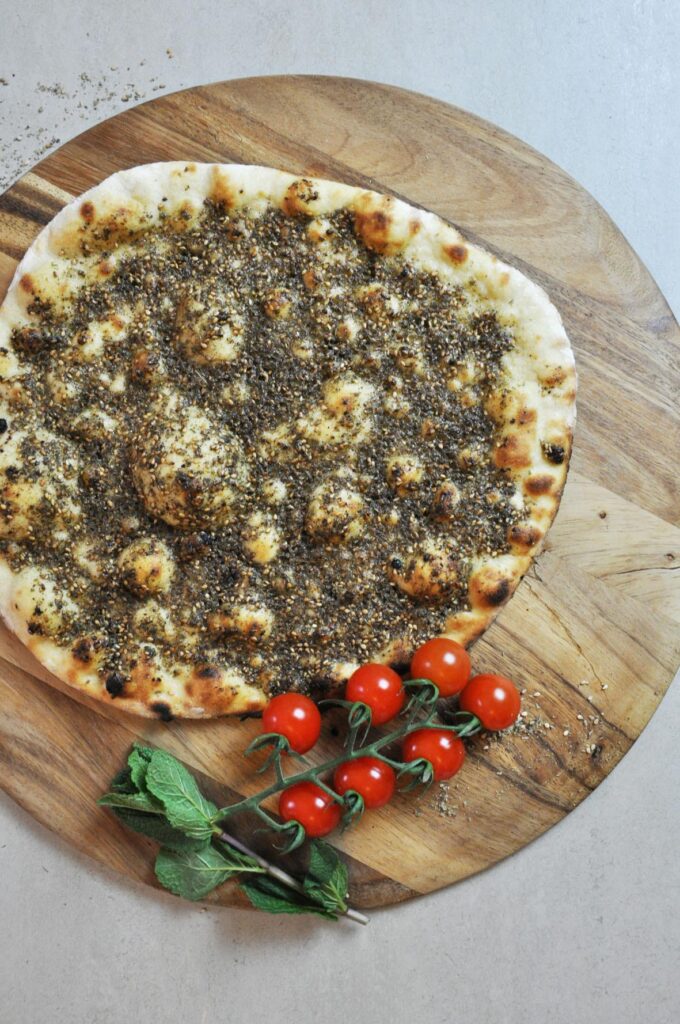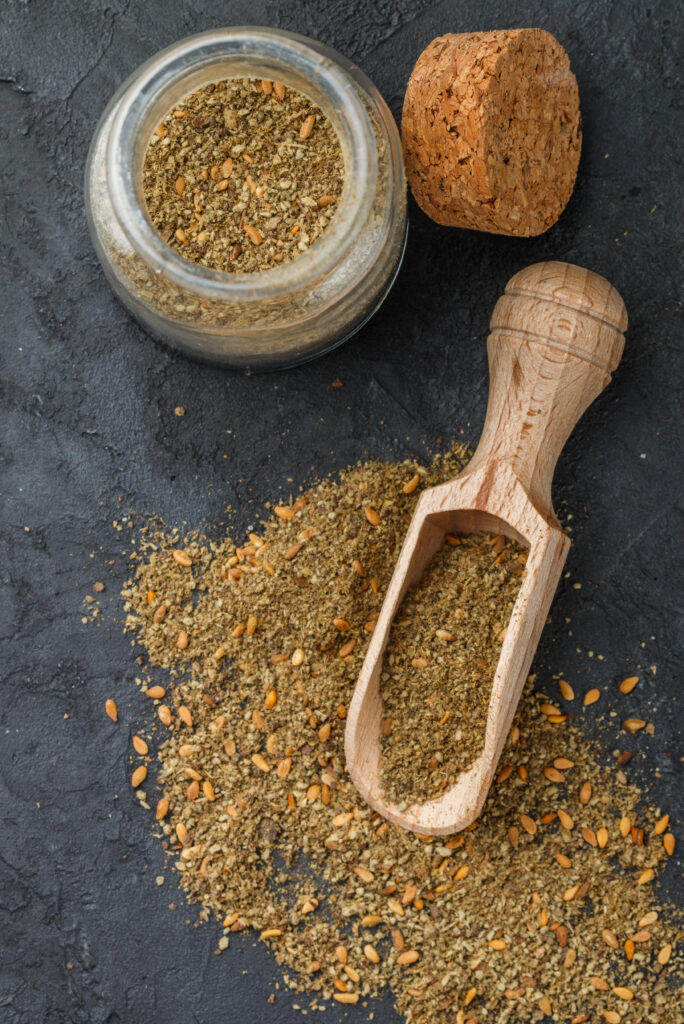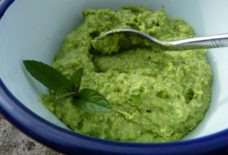Za'atar: The Irresistible Spice Blend That Defines Flavor and Tradition in the Arab World

By: Blanche Shaheen/Arab America Contributing Writer
My great auntie Bahia used to always tell me, “some za’atar each day keeps the doctor away!” She lived well into her 90s with no serious health issues. Her breakfast of choice? Fresh homemade pita bread she made weekly, with plenty of zesty za’atar, fruity extra virgin olive oil, and creamy labneh kefir cheese.
Za’atar, a versatile and aromatic herb blend, holds a special place in Middle Eastern cuisine and culture. This unique mixture, often composed of thyme, sesame seeds, sumac, and salt, is celebrated for its distinctive flavor profile and historical significance. This spice is extremely popular in the Levantine countries of Palestine, Lebanon, Syria, and Jordan.
The flavor profile of za’atar is a harmonious blend of earthy, tangy, and nutty notes. Thyme, the primary herb in many za’atar blends, imparts a warm, herbal undertone. Sumac adds a tart, lemony brightness that contrasts beautifully with the nutty crunch of sesame seeds. The salt rounds out the mix, enhancing the other flavors and making za’atar a versatile seasoning for a variety of dishes. This balance of flavors makes zaatar a popular choice for enhancing breads, meats, and vegetables, as well as for making dips and dressings.
Za’atar’s versatility makes it a beloved ingredient in Middle Eastern kitchens. Traditionally, it is sprinkled over flatbreads like manakeesh, where it is combined with olive oil to create a flavorful, aromatic crust. Za’atar can also be used as a seasoning for meats, adding depth to grilled chicken or lamb. In salads and dips, such as hummus and labneh, za’atar offers a zesty kick that complements the creamy textures of these dishes. Additionally, za’atar is often incorporated into marinades, providing a unique twist to roasted vegetables or fish.
The History of Zaatar

Za’atar’s history is deeply intertwined with the culinary traditions of the Middle East. The use of thyme and other herbs dates back to ancient civilizations, where they were prized not only for their flavor but also for their medicinal properties. Historical texts and archaeological findings suggest that za’atar has been a staple in the region for thousands of years, used by various cultures from the Greeks and Romans to the Ottomans.
The blend’s specific composition can vary by region and family tradition, with some versions including additional ingredients like oregano or marjoram. This remarkable herbal fusion not only offers a delectable taste experience when paired with warm bread and dipped in olive oil but also boasts an array of health advantages. Among its numerous health benefits, Za’atar is renowned for its memory-enhancing properties when incorporated into one’s diet.
For Palestinians in particular, za’atar is more than just a spice blend—it is a symbol of cultural pride and continuity. The herb mix embodies the essence of Palestinian cuisine and is often associated with traditional home cooking and communal meals.
The preparation and consumption of za’atar carry deep cultural significance. Many Palestinians take pride in their unique za’atar recipes, which are often passed down through generations. Furthermore, za’atar’s connection to the land is profound. The herbs used in za’atar are often locally sourced, a reminder of the region’s natural bounty and the enduring relationship between its indigenous people and their land.
When shopping for za’atar, no two blends are the same. To see how the top za’atar blends in the market scored on a ten point scale, click on the link below:
Blanche Shaheen is an Emmy Award winning journalist, host of the YouTube cooking show called Feast in the Middle East, and cookbook author. For more authentic and classical Middle Eastern recipes, you can purchase her cookbook, “Feast In the Middle East here: https://secure.mybookorders.com/mbo_index.php?isbn=9781545675113 For her cooking video tutorials, visit https://www.youtube.com/user/blanchetv Her recipes can also be found at https://feastinthemiddleeast.wordpress.com/
Check out our blog here!








